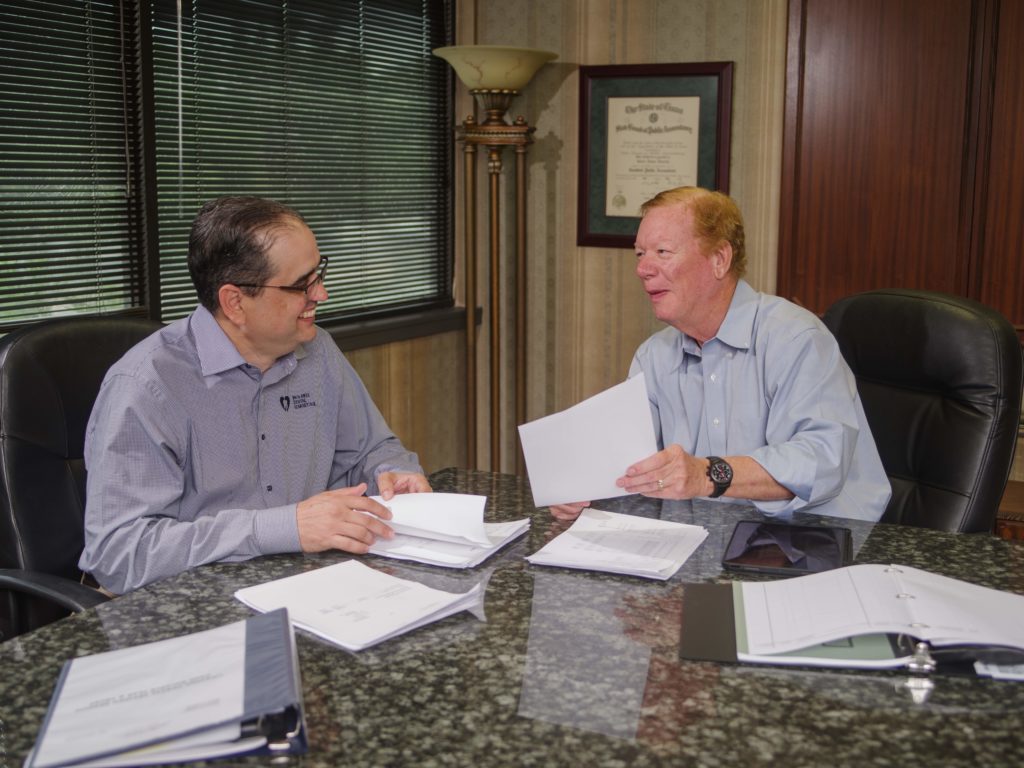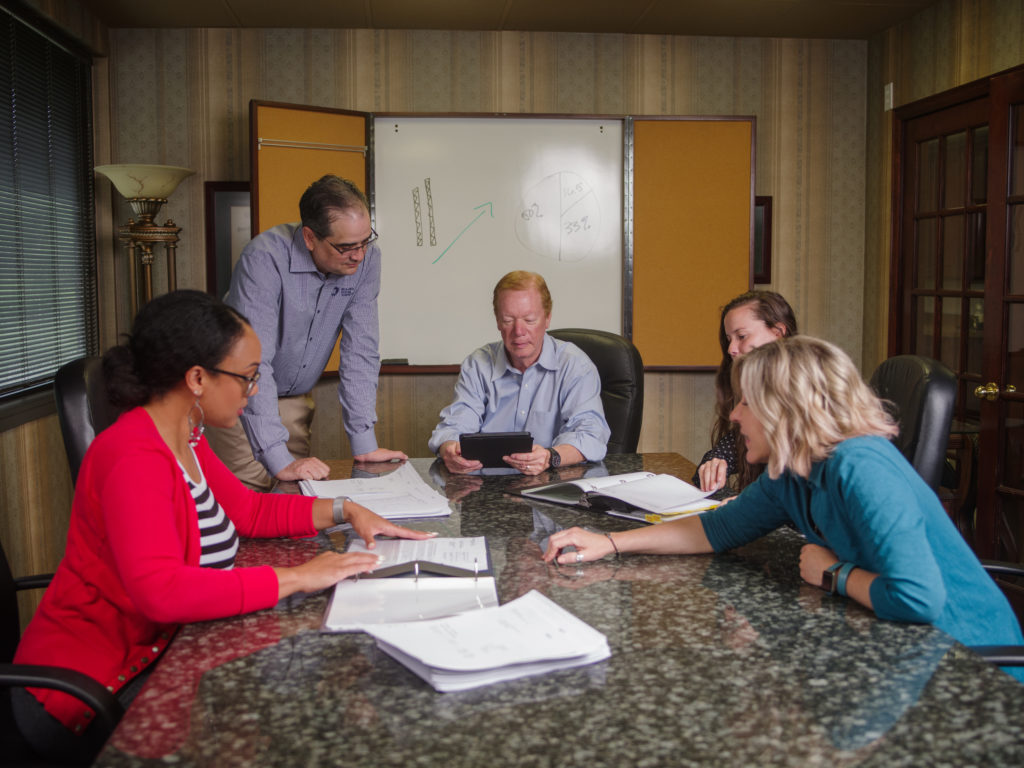Focus on
Preparing For Retirement
To have a comfortable, secure, and fun retirement, you need to build a financial cushion to fund it. Planning for retirement starts with thinking about your goals and how long you have to meet them.
Step 1
Understand Your Time Horizon
Taking a hard look at how old you are and how many years of work you have left is an important part of strategically planning for retirement. These two variables will determine how much money you can invest, what to invest in, and what your expected returns will be over a specific period of time. Your current age and expected retirement age are what we use to formulate the first steps of an effective retirement strategy.
For instance, if you are a younger person with decades of work ahead of you before retirement, you can handle more risk in your portfolio. That is why we tell our younger clients to start investing and saving as early as possible to take advantage of potential high returns while they can still afford the risk. If, however, you are older and closer to retirement, your portfolio should be focused on income and preserving your capital.
Need help understanding what your retirement strategy should be?
Step 2
What Is Your Retirement Spending Needs
When preparing for retirement, it is important to determine what your post-retirement spending habits will be. Most people underestimate how much money they will need during retirement. Not to mention, many spend their first years splurging on travel or other bucket-list goals, which can eventually come back to haunt them when they run out of money.
Even if you think you have saved enough money, external factors such as inflation and economic downturns can still have a major impact on your financial wellbeing post-retirement. Our Financial Planning services include comprehensive, one-on-one sessions where you discuss your situation and goals so we can create tailored plans built specifically for you. We help you determine your retirement spending needs to make sure your wealth lasts a lifetime.
Step 3
Calculate Your After-Tax Investment Returns
Once you understand your time horizon and spending needs, the next variable to consider is what your real return will be after tax deductions. Depending on the type of retirement account you hold, most investment returns are taxed. It is therefore important to invest your money in a way that will produce returns over and above the taxes you will need to pay.
This means you must calculate your actual rate of return on an after-tax basis. Calculating your investment returns post-retirement without compensating for the money you will need to pay in taxes can cause a shortfall. Determining your tax status when you start to withdraw funds from your retirement accounts is also a crucial component of the retirement planning process. We can help you with this type of financial planning.
Step 4
Assess Risk Tolerance vs. Investment Goals
One of the most important components of retirement planning is understanding how to allocate investments to reach your retirement objectives. This is where ‘Risk vs Return’ comes into play. This simple equation helps determine your investment strategy and your potential wealth growth potential in the long run. Ask yourself, How much risk am I willing to take to meet my objectives? and Should I be adding some money to risk-free Treasury bonds for required expenditures?
If you are managing your own investments, it is your responsibility to ensure that you are comfortable with the amount of risk you are exposed to during different periods of your life. You need to determine what is a necessary investment and what is a ‘gamble.’ If you need help investing your hard-earned money, look no further. Our experts can help you achieve your long and short-term financial goals. We provide financial planning services to help our clients find the perfect balance of risk and return.
Step 5
Stay on Top of Estate Planning
Now for the final steps to ensure a well-rounded retirement plan. Estate planning requires assistance from different professionals, such as lawyers and accountants. Life insurance is also an important part of estate planning and the retirement-planning process. By having both a proper estate plan and life insurance coverage, you ensure that your assets are distributed in a manner of your choosing and that your loved ones will not experience financial hardship following your death.
Tax planning is another crucial part of the estate planning process. If you wish to leave assets to family members or a charity, the tax implications of gifting the benefits or passing them through the estate process must be compared.
At Edwards & Associates PC, we provide an investment approach that aims to produce returns that meet yearly inflation-adjusted living expenses while preserving the value of our clients’ portfolios. This is important to ensure enough funds will be left for your family members and dependents at the time of your death.
Are you ready to meet us?
We Are Your Financial Experts.
Our Services
Monthly Core Services
Monthly Core Services In this stress-free accounting offering, we handle bookkeeping, taxes, financial reporting, and…
Financial Planning
Strategic Financial Planning for Dentists Secure your financial future with expert guidance tailored to dental…
Transition Services
Transition Services for Dentists Whether you’re launching a new practice, expanding, or preparing to sell,…
Dental Practice Consulting
Dental Practice Consulting Running a dental practice comes with unique challenges. Since 1987, our team of…
Have Questions?
Contact us at info@eandassociates.com or call us at (972) 267 9191 to schedule a consultation!
Does a Dentist Need a Financial Planner?
As a dentist, it’s very important to have experts working with you that can provide you with valuable information on the topics you did not study while at dentistry school. Would you like somebody that didn’t go to dental school to perform an extraction on your teeth? Probably not… and that’s why you should not be using google or trusting your own opinion when it comes to financial planning. Financial advisors are important to have because they are well trained and equipped to help you reach your goals and prepare you for the unexpected.
A financial advisor helps you organize your personal and business finances. They help manage your savings and investments to ensure a prosperous future and retirement. They also help you make short-term decisions with your money and consult you on how to reach your financial goals.
What Are the Tax Ramifications of Selling My Dental Practice?
In most cases, on the sale, the tax will be the sales price minus any expenses paid. It should be noted that the sale of stock works a bit differently in that the gain will be taxed at capital gain rates. Stock gain is if you have owned the company for more than a year then you get capital gain treatment which means you will be taxed at either 15% or 20% depending on your income level.
If it’s a sale of assets and goodwill the assets will be taxed at ordinary income rates if all the assets are fully depreciated which they typically are. But there could be an opportunity to have the sale of goodwill receive capital gain treatment depending on how the attorney structures the sale which is why it’s important to consult a Dental CPA or Attorney.
Can a Dental CPA Help Me With Retirement?
Yes, we can! If you are a dentist, with a taxable income, investments, assets, and plan to eventually retire, then you need a dental CPA. Choosing the best person for the job is the hard part. A Dental CPA will help you make the best financial decisions to prepare for retirement. From helping you to start your business off right to ensuring your investments produce enough returns.
Our goal as a dental CPA is to help you keep more of what you earn!



